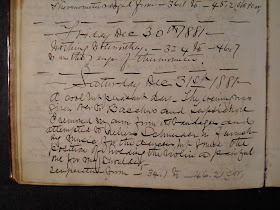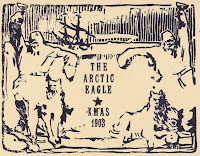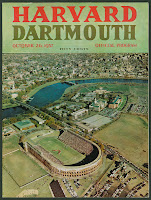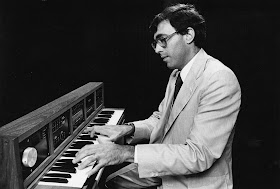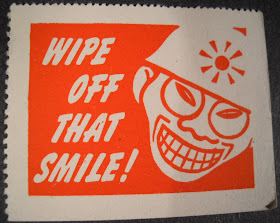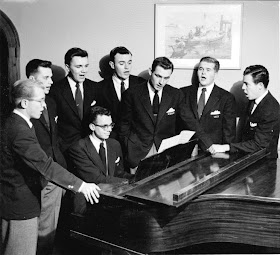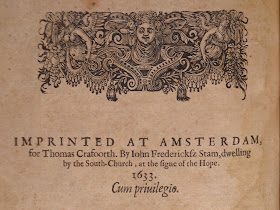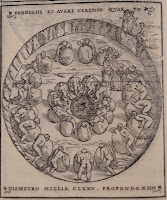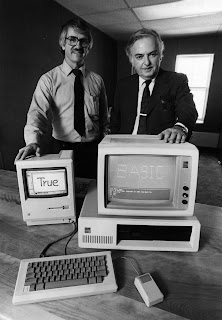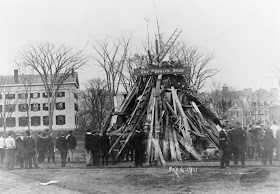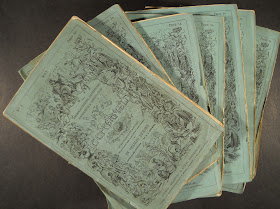
While processing the poet Richard Eberhart's papers we came across this mimeo of Allen Ginsberg's "Howl." It turns out to be the true first printing of "Howl" preceding Lawrence Ferlinghetti's City Lights edition and produced in a run of only 25. It was typed by poet Robert Creeley and run off by Kenneth Rexroth's wife (and Creeley's lover), Marthe.
This particular copy is, arguably, the most important printed copy of "Howl" ever produced. Why? It was sent to Eberhart on May 18, 1956, while Eberhart was teaching at Princeton and preparing an article for the
New York Times to be called "West Coast Rhythms." The article was on the emerging poetry scene of the west coast and San Francisco in particular. Eberhart had recently visited San Francisco to complete research for his article. While there, he heard Ginsberg read "Howl" and discussed his impressions of it with the poet himself. He told Ginsberg he thought it was an angry poem – destructive and not offering any solutions.
A few weeks later, knowing Eberhart was preparing his
New York Times article, Ginsberg sent him a 34-page handwritten letter explaining "Howl" which filled a notebook (sadly, Dartmouth holds the envelope in which the letter and mimeo were sent as well as supporting letters by Ginsberg, but the 34-page notebook itself is held by another institution. See
Rauner Presses P364to for the published letter). In the letter, Ginsberg laid out his case for "Howl" and countered Eberhart's impression of the poem.
Accompanying the letter and buttressing Ginsberg's arguments was this mimeographed copy of "Howl" containing several small corrections in Ginsberg's hand. The copy provided Eberhart with the ability to read "Howl" while he was preparing his seminal article. The mimeo itself had been run off for students in a class he was guest teaching at San Francisco State. He also sent several copies to influential gatekeepers in the poetry establishment, as well as friends and fellow poets.
Ginsberg was successful in his lobbying efforts and on September 2, 1956, Eberhart wrote a favorable article on the San Francisco scene highlighting Ginsberg and "Howl" in the article.
In a December 20, 1956 follow-up letter sent to Eberhart, Ginsberg credits this article with "breaking the ice" in regard to getting what would become known as the "Beats" published. Eberhart's article, along with a federal censorship charge and trial against the City Lights edition of "Howl," would catapult Ginsberg and his fellow poets into the public consciousness. Riding this wave of publicity Viking Press, who had been dragging its feet with publishing Kerouac's
On the Road, moved ahead with publication. The rest, as they say, is history.
Rauner also holds a remarkable first printing (with a run of 1000) of the City Light's edition of
Howl in which Ginsberg heavily and creatively inscribes the title page to Eberhart. Ginsberg also fills in the expurgated words that were left out of the first edition to placate potential censors.
To see the mimeographed version of "Howl" or to see other items from the Papers of Richard Eberhart ask for
MS-1082. To see the first City Lights edition of
Howl ask for
Eberhart PS3513.I74 H6.
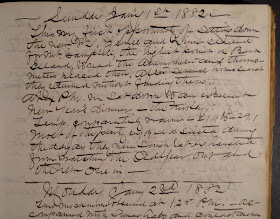 George W. Rice sounded hopeful in his diary on January 1st, 1882. As photographer to the 1881-1884 Lady Franklin Bay Expedition lead by Adolphus Greely, he had just finished "an excellent New Year's dinner" of turkey. It had been a relaxing day. He noted that many of the party took "a siesta... as they were somewhat exhausted from marching the Old Year out and the New One in." The 31st had been "a cool and pleasant day--the evening was given over to Bacchus and Terpsichore." "Cool" is relative: he recorded the temperature at 34.1 to 46.2 degrees below zero.
George W. Rice sounded hopeful in his diary on January 1st, 1882. As photographer to the 1881-1884 Lady Franklin Bay Expedition lead by Adolphus Greely, he had just finished "an excellent New Year's dinner" of turkey. It had been a relaxing day. He noted that many of the party took "a siesta... as they were somewhat exhausted from marching the Old Year out and the New One in." The 31st had been "a cool and pleasant day--the evening was given over to Bacchus and Terpsichore." "Cool" is relative: he recorded the temperature at 34.1 to 46.2 degrees below zero.